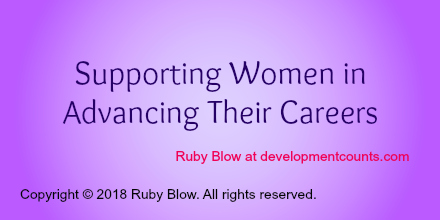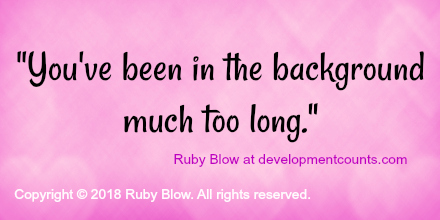Disgruntled Adults say “Fix this kid!”
At times I grow weary of the stories I am told from therapists about children and teens that they are treating. Weary because too often the therapist is reporting the same narrative. The story goes like this: “The child/teen acted out. How can I get them to stop or how can I prevent them from misbehaving?” … and so on.
Upon further discussion…I inevitably hear that the child/teen experienced a series of abusive or neglectful circumstances and/or the adults surrounding the child set very few limits or structure early on in the child’s development. At some point people (i.e. the school, parents, foster parents, family) get tired of the misbehavior and they seek a solution via therapy and often via medication.
The general shared treatment strategy adopted by many clinicians treating these children/teens, in response to the concerns of the the effected/disgruntled adults, is the following:
- what “triggered” their outburst; and
- how they can learn to think before they feel; and
- then respond differently to the circumstances.
The Whole Picture
Perhaps this is a simplification, but I see this set of interventions/practices as a direct result of clinicians applying pragmatic (CBT, REBT) approaches with children. The reason this concerns me is that in practice it is often reported as this child/teen did “x” and he or she is “out of control, oppositional, defiant, and difficult to treat.” The clinician may have a full caseload of such cases. Naturally, they begin to feel overwhelmed. They also begin to wonder if therapy even works.
I think that we need to take a step back and look at the whole picture. The picture that is being painted of the child/teen is occurring in a context: the child exists within community, family, school, home/housing situation and so on.
Blame vs. Responsibility
It is vital that we continue to view “problematic behavior” in context. As therapists, educators, coaches, family, and helping professionals we need to consider who is responsible instead of wholly accepting who is being presented for blame.
Often children and teens are being blamed for circumstances created by adults around them. They also have to contend with the society that confronts them and the systems constructed within that society.
The truth is most of the emotional and behavioral problems we see in children, teens and adults will take time to properly address. Too often therapists feel pressure both internal and external to facilitate rapid results. While some symptom relief can occur quickly, most symptoms return if the context that created the initial problems is not being addressed.
Increasingly we are moving to diagnose and medicate children with everything from bi-polar disorder to psychotic disorders and treat them the way that we treat adults. By the time some children are seen for ongoing therapy in community settings the clinician may not have had an opportunity to see that child un-medicated. How can we know their baseline mood, behavior and so on…when powerful psychotropics are altering their brain chemistry and hence their whole neurology (the system that communicates and messages the body)?
Origin Story
Furthermore, we need only to look toward the often very difficult circumstances surrounding the child/teen to find the origins of their discontent:
- incarcerated parents;
- early adjudication of youth;
- failing schools;
- substance abusing parents;
- permissive households;
- dangerous communities;
- undernourishment (lack of food, adequate clothing and/or housing);
- abusive households (physical, emotional, intellectual, spiritual, sexual);
- absentee parents (siblings raising siblings, grandparents/aunts/uncles raising grandchildren/nieces/nephews);
- families that give their children everything they need materially but fail to attend to the whole needs of their children.
I challenge all of us to understand and conceptualize more broadly the context and circumstances of the children and teens we are seeing. I believe that many children are having natural responses to horrible circumstances. When they have these responses like tantrums, poor grades, inattentiveness, running away, refusing to follow adult commands, aggression with peers and adults…we become so focused on trying to stop the undesirable behavior that we sometimes fail to normalize their “reactions.”
Children do not exist in a vacuum, they do not spring onto this earth alone. The truth is many of them have been abandoned. If not physically then mentally and emotionally.
Cycles of Abuse and Neglect
We need to recognize the enormity of the problems and challenges so that we can address the “whole” and not just a “part.” We need to address the cycles of abuse and neglect.
As clinicians we have a unique opportunity to join with families and treat the entire family. Family therapy theory and practice has to be studied in order to improve and foster this skill set among more clinicians.
We also need to recognize that “talk” therapy has limitations with children and teens and even some adults. We need experiential techniques, projective techniques, sand trays and play therapy.
Clinicians must accept the challenge of advancing and expanding their theoretical frameworks beyond pragmatic approaches. We as human beings are more complex than our reported thoughts and awareness about our thoughts.
As therapists we need to hear the “story” of what is “wrong” with a child or teen and not become laser focused on supporting that story. Elements of the story may be true…in other words at a certain age one’s consciousness about how they respond and what they are doing is sufficient for them to be more responsible for their own behavior. However, this is often difficult because of a lifetime of mistreatment or neglect from others who never took responsibility for their own actions.
A Lifetime of Mistreatment
How can we expect children and teens to show restraint that adults have not shown?
How can we expect them to be responsible when the adults around them have not demonstrated this in their actions, words and values?
When someone tells me a teen “hit” their parent or foster parent…I ask myself and that clinician “What did the parent/foster parent do prior to that event?” I know that it is a learned reaction over time or an immediate reaction to being threatened or hit either by that adult or another adult.
I do not swallow the story whole that this child/teen is a problem child just because they are a problem. We have to do better by the many, many children entering our systems of service and care. This includes educational systems, healthcare/mental healthcare systems, youth recreation programs, detention programs and so on.
We can no longer allow sweeping systemic problems to exist without advocating for change and/or learning more about programs and systems that are effective and healthy in their service to youth, families, and communities.
I can’t teach anyone an intervention that will outweigh all of the harm of broken systems pressing down on our children. As therapists — as human beings — we have to organize and get more involved with fixing what is broken. We have to take responsibility and alter broken systems and/or create new ones.
We have to support one another…so that we don’t become discouraged and weary for too long. There is much work to do and many children, teens and families depending on us.
Copyright © 2016 Ruby Blow. All rights reserved.
Share your thoughts on Linkedin, Facebook, Twitter or log in to one of your accounts below to comment. Subscribe to my YouTube channel.





